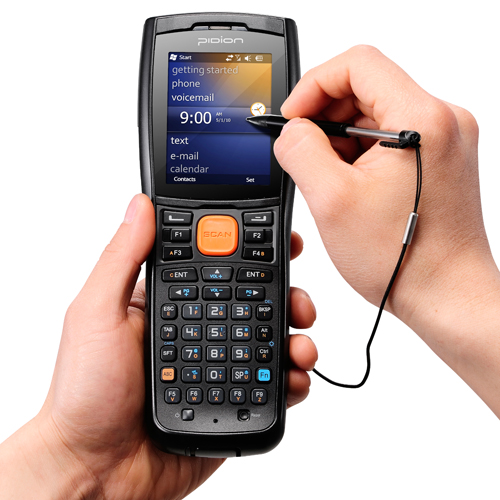Case Study#:1
Examples of Operating Systems
A) Batch Systems
According to what I’ve research about batch systems, first and foremost, I found out that batch systems are those inputs that are dependent and relied on punched cards or tapes. It actually measured in throughputs. By the way, the word “throughput” is the average rate of successful message delivery over a communication channel. The operator .batched similar jobs together and then ran in the computer to speed up the processing. One of the example OS of batch system is the OpenVMS or Open Virtual System. It looks like this:
Open Virtual System
The image above is an example of a batch operating system. OpenVMS has a different kind of names. It is called VAX-11/VMS or known as VAX/VMS. A multi-user, multiprocessing virtual memory-based operating system (OS) designed for use in time sharing, batch processing, real-time process priorities can be set higher than OS kernel jobs. The OpenVMS operating system can be tuned to perform well in a wide variety of environments. This includes combinations of compute-intensive, I/O-intensive, client/server, real-time, and other environments. Actual system performance depends on the type of computer, available physical memory, and the number and type of active disk and tape drives.
B) Interactive Systems
Interactive systems are those systems that are faster than the batch systems but slower than real-time systems. It is usually used in programs which can provide fast turnaround when debugging. It is also an operating system that allows users to run interactive programs. Interactive systems were command line systems, which tightly controlled the interaction between the human and the computer. Users may require the knowledge of the commands that might be issued and how the arguments were to be ordered. Some of the samples that I encountered during my research is the UNIX operating system.
UNIX
Today's UNIX system is robust, scalable, and it continues to provide uniform access to a wide variety of computing hardware. For these reasons the UNIX system continues to be the operating system of choice for mission-critical systems. The UNIX system is the key enabler for enterprises that wish to keep switching costs as low as possible. That is, the UNIX system remains the only open alternative to locking in on a proprietary operating system.
C) Real-time Systems
According to what I’ve learned during discussions, this system is fast and a time limit sensitive system. It must be used in time-critical environment like industrial processes, sophisticated medical equipment and etc. It must be 100% responsive, 100% of the time. A sample that I discovered during my own research is the: Nano-RK
NANO-RK
This is a Real-Time Operating System designed for the use in sensor networks run by micro controllers. It supports a fixed-priority fully preemptive scheduler with fine-grained timing primitives to support real-time task sets. "Nano" implies that the RTOS is small consuming 2K of RAM and using 18K of flash, while "RK" is short for Resource Kernel. A resource kernel provides reservations on how often system resources can be consumed. For example, a task might only be allowed to execute 10ms every 150ms, or a node might only be allowed to transmit 10 network pockets per minute (Network Reservation).
D) Hybrid Systems
First and foremost, hybrid systems are those systems that are combined by a batch and interactive system. It accepts and run batch programs in the background. However, there are different kinds of operating systems in hybrid system. One of them is the so called "Linux on ITRON" hybrid operating system architecture for embedded systems.


ITRON emerged as an ambitious Japanese initiative known as The Real-time Operating system Nucleus (TRON). While the LINUX was designed to provide personal computer users a free or very low-cost operating system comparable to traditional and usually more expensive Unix systems.
This hybrid operating system which is to combine a general-purpose operating system with a real-time operating system is a promising approach to satisfy the real-time property, which are usually required or embedded systems. The paper describes a hybrid operating system architecture called "Linux on ITRON," which is a combination of Linux and a real-time kernel based on the μITRON Specification.
E) Embedded Systems
The embedded system is those systems placed in other products. It may add features and capabilities. It is also a computer system designed to perform one or a few dedicated functions. It is embedded as part of a complete device often including hardware and mechanical parts. These operating systems are designed to be very compact and efficient, forsaking many functions that non-embedded computer operating systems provide, and which may not be used by the specialized applications they run. The best example of this is the ANDROID OS.
The Android Operating System is a popular OS in touch phones today. It is also a software stack for mobile devices that includes an operating system, middleware and key applications. The Android SDK provides the tools and APIs necessary to begin developing applications on the Android platform using the Java programming language.
· System C library - a BSD-derived implementation of the standard C system library (libc), tuned for embedded Linux-based devices
· Media Libraries - based on PacketVideo's OpenCORE; the libraries support playback and recording of many popular audio and video formats, as well as static image files, including MPEG4, H.264, MP3, AAC, AMR, JPG, and PNG. etc.
_end_







